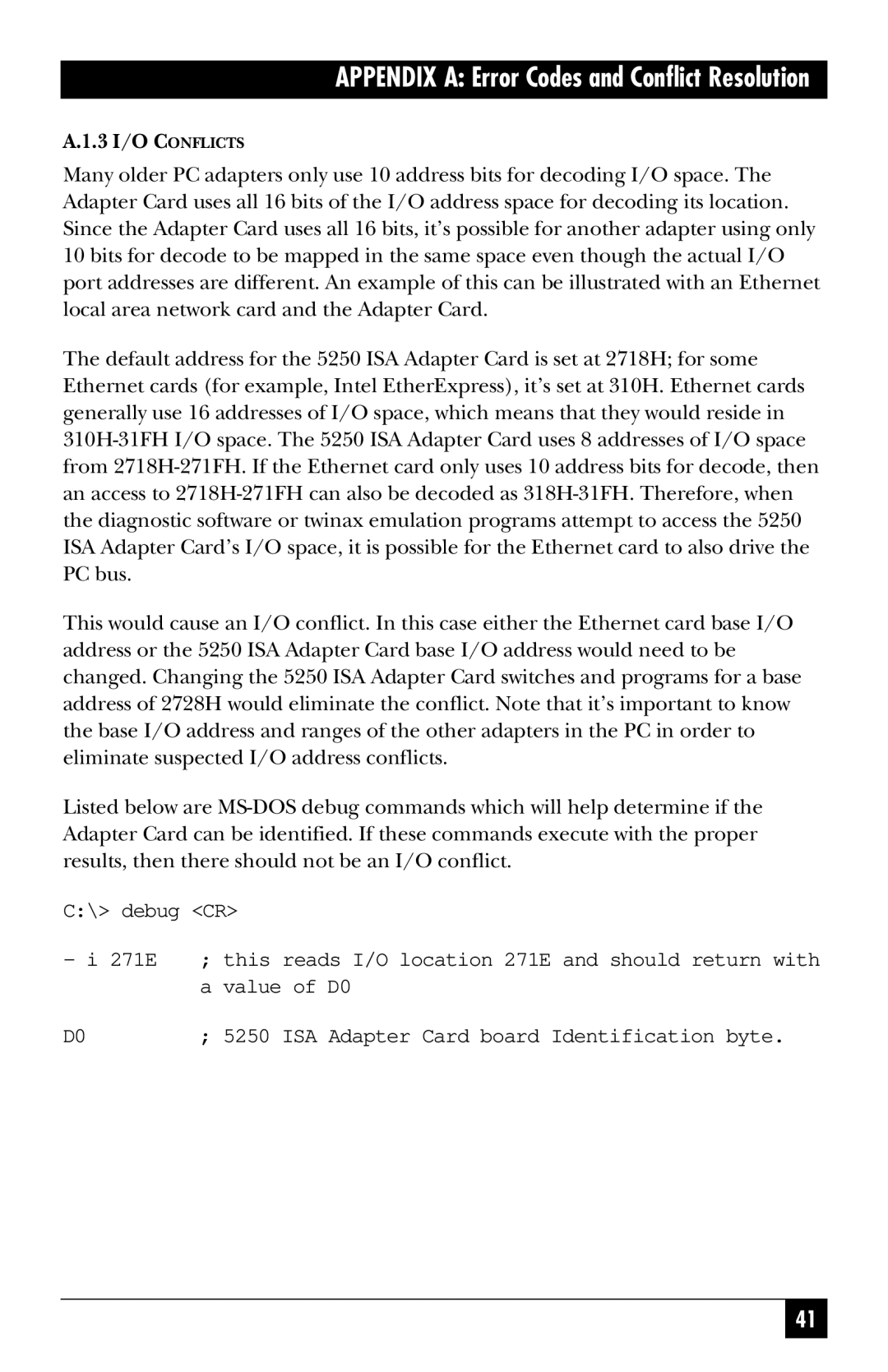
APPENDIX A: Error Codes and Conflict Resolution
A.1.3 I/O CONFLICTS
Many older PC adapters only use 10 address bits for decoding I/O space. The Adapter Card uses all 16 bits of the I/O address space for decoding its location. Since the Adapter Card uses all 16 bits, it’s possible for another adapter using only 10 bits for decode to be mapped in the same space even though the actual I/O port addresses are different. An example of this can be illustrated with an Ethernet local area network card and the Adapter Card.
The default address for the 5250 ISA Adapter Card is set at 2718H; for some Ethernet cards (for example, Intel EtherExpress), it’s set at 310H. Ethernet cards generally use 16 addresses of I/O space, which means that they would reside in
This would cause an I/O conflict. In this case either the Ethernet card base I/O address or the 5250 ISA Adapter Card base I/O address would need to be changed. Changing the 5250 ISA Adapter Card switches and programs for a base address of 2728H would eliminate the conflict. Note that it’s important to know the base I/O address and ranges of the other adapters in the PC in order to eliminate suspected I/O address conflicts.
Listed below are
C:\> debug <CR>
-i 271E ; this reads I/O location 271E and should return with a value of D0
D0 ; 5250 ISA Adapter Card board Identification byte.
41
